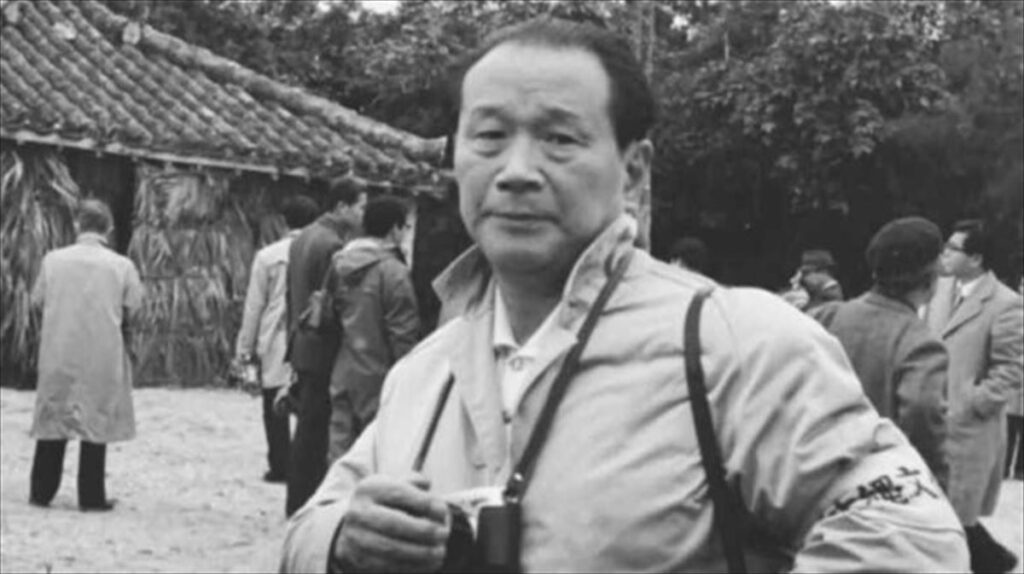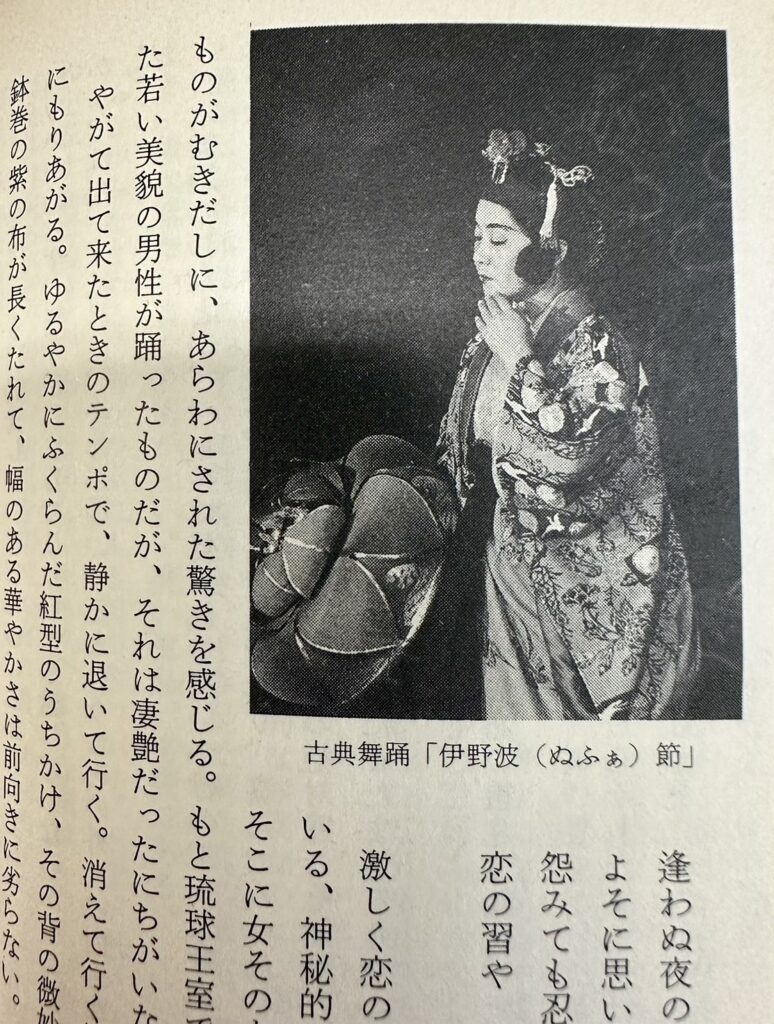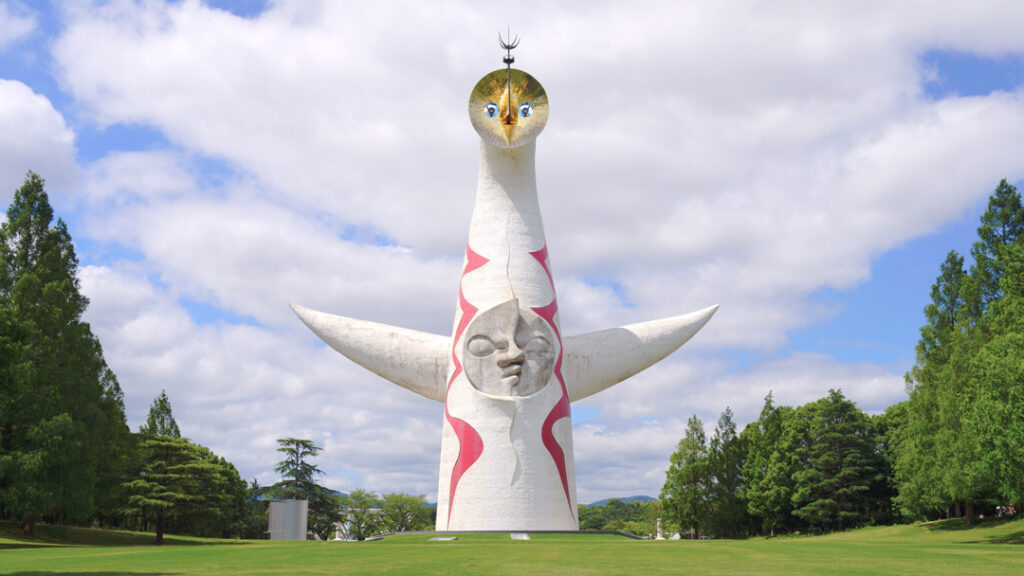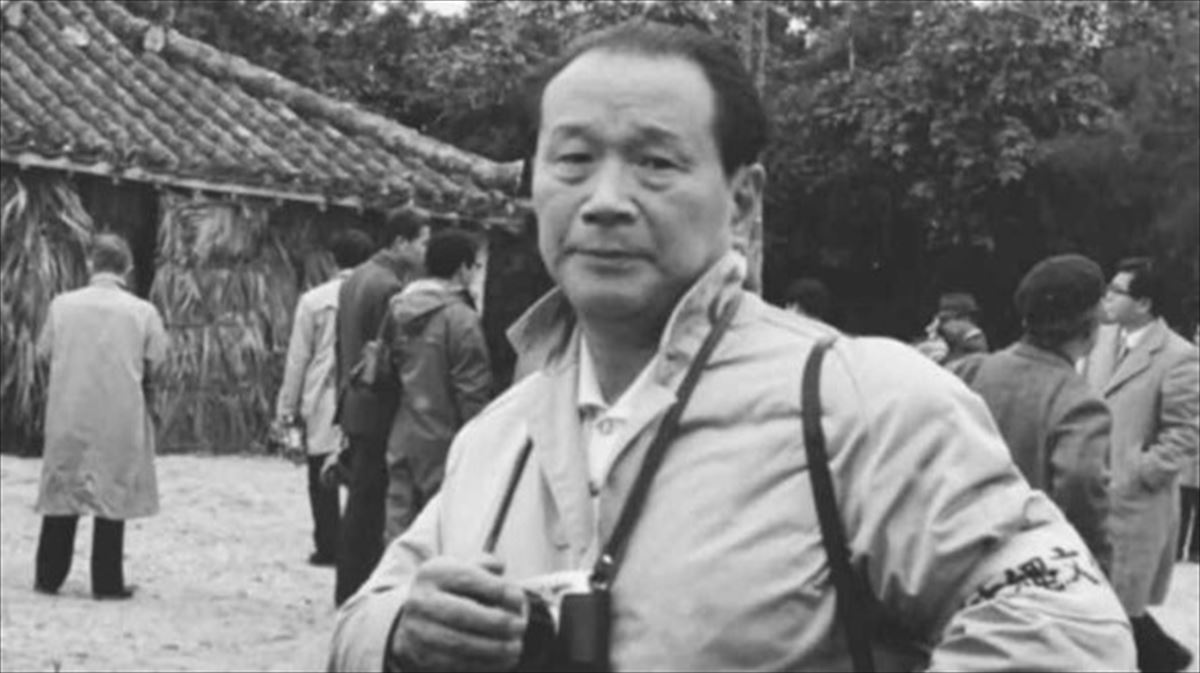岡本太郎氏と沖縄・琉球
岡本太郎(おかもと たろう;1911生まれ~1996死去)さんは日本を代表する芸術家ですが、1959年と1966年の2回にわたり沖縄を訪問しました。同氏の著書のなかには、「沖縄とは、私にとって一つの恋のようなものだった」と記されているほど、沖縄文化に強く惹かれていました。同氏の沖縄への関心は、戦後日本のルーツを探る旅の一環として始まりました。「沖縄の中にこそ、失われた日本がある」とも語っています。

琉球舞踊は、琉球王朝文化の象徴的な芸能の一つです。古典舞踊、雑踊、創作舞踊の3つに大別され、その源流は古い祭祀や儀礼にあるとされています。岡本太郎さんは、このような豊かな歴史と文化的背景を持つ琉球舞踊に強い関心を示したと推測されます。
岡本太郎さんは沖縄文化について独自の見解を持っていました。同氏は沖縄の芸能、特に琉球舞踊のような伝統芸能に、日本文化の根源的な要素を見出したと考えられます。琉球舞踊に見られる「コネリ」や「ナヨリ」といった動きは、古代の祭祀や儀礼の名残を留めており、岡本さんはこうした要素に強く惹かれたのではないでしょうか。

岡本太郎さんと琉球舞踊の関係は、単なる芸術的興味にとどまらず、日本文化の本質を探求する彼の生涯の取り組みの一部であったと言えるでしょう。琉球舞踊を通じて、岡本さんは日本の文化的アイデンティティの一端を見出し、その価値を広く伝えようとしたのです。
「沖縄ではじめて自分自身を再発見した」と語る岡本太郎
沖縄は、人々を魅了する青い海・空、自然が広がる観光地としての側面のみならず、人々の人生に新しい視点の醸成、原点回帰の機会という価値を提供できると信じています。日本民俗学の父・柳田國男の「海上の道」「日本人北進論」で提唱される日本人のルーツともいわれる沖縄。どこか懐かしい、心の故郷でもあります。
わたしたちは、沖縄の伝統文化芸能を通して、沖縄の持つ本来価値、本質価値を、世界5大長寿地域「ブルゾーン」としても知られる沖縄を、次代の担う若い世代、地域の方々とともに伝え、継承していくお役目を、日本一の文化村・読谷村に静かに佇むこの小さな道場からささやかにも果たしていければと願っております。


”Tower of the Sun” designed by Taro Okamoto, symbol of the 1970 Japan World Exposition in Osaka.
太陽の塔とは – 「太陽の塔」オフィシャルサイト(大阪府日本万国博覧会記念公園事務所) より
Taro Okamoto and Ryukyuan Dance
Taro Okamoto and Okinawa/Ryukyu
Taro Okamoto (b. 1911 – d. 1996), one of Japan’s most famous artists, visited Okinawa twice, in 1959 and 1966. He was so strongly attracted to Okinawan culture that he wrote in one of his books, “Okinawa was like a kind of love for me. His interest in Okinawa began as part of a journey to discover the roots of postwar Japan. He also said, “In Okinawa, there is the lost Japan.
Ryukyuan dance is one of the symbolic performing arts of the Ryukyu Dynasty culture. It is divided into three main categories: classical dance, miscellaneous dance, and creative dance, and its origins are believed to lie in ancient rituals and ceremonies. It is assumed that Taro Okamoto showed a strong interest in Ryukyuan dance, which has such a rich history and cultural background.
Taro Okamoto had his own views on Okinawan culture. It is believed that he found fundamental elements of Japanese culture in Okinawan performing arts, especially in traditional performing arts such as Ryukyuan dance. The “koneri” and “nayori” movements found in Ryukyuan dance retain vestiges of ancient rituals and ceremonies, and Okamoto may have been strongly attracted to these elements.
Taro Okamoto’s relationship with Ryukyuan dance was more than just an artistic interest; it was part of his lifelong quest to understand the essence of Japanese culture. Through Ryukyuan dance, Okamoto discovered a part of Japan’s cultural identity and sought to spread its values.
“In Okinawa, I rediscovered myself for the first time,” says Taro Okamoto.
We believe that Okinawa is not only a tourist destination with its captivating blue ocean, sky, and natural beauty, but also a place that offers the opportunity to develop new perspectives and return to one’s origins in life. Okinawa is said to be the root of the Japanese people as advocated by Kunio Yanagida, the father of Japanese folklore, in his “The Way to the Sea” and “The Northward Expansion of the Japanese. Okinawa is also a nostalgic home of the heart.
Through Okinawa’s traditional cultural arts, we hope to fulfill our role of conveying and passing on Okinawa’s intrinsic and essential values to the next generation and the local people together with the younger generation of Okinawa, which is also known as the “Blue Zone,” one of the five most longevity regions in the world. We hope to fulfill this role from this small Ryukyuan dance school quietly located in Yomitan Village, the most cultural village in Japan.


